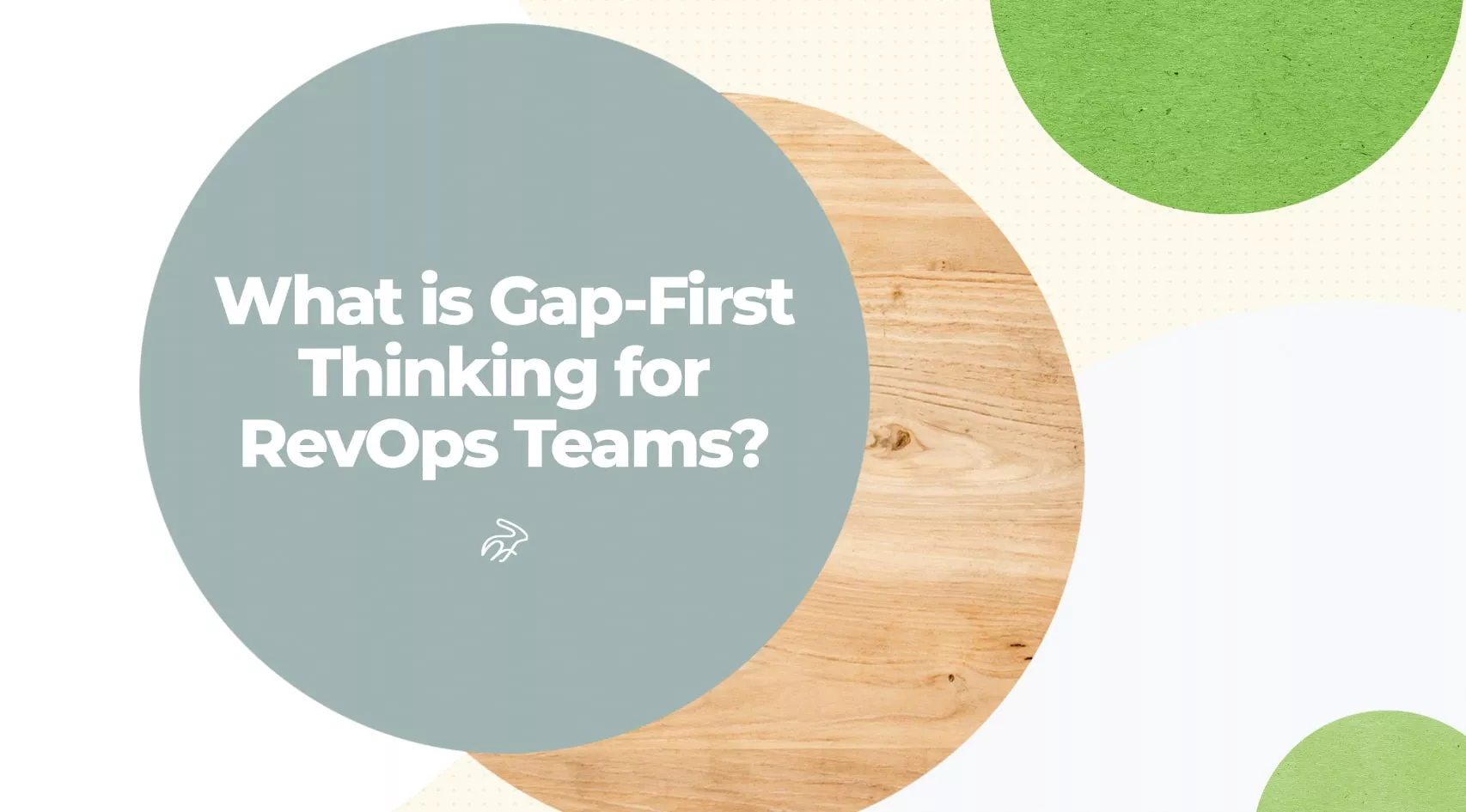What is Gap-First Thinking for RevOps Teams?

Gap-first thinking, our approach to the RevOps methodology, could just as easily be called customer-first thinking. It’s about shifting the perspective of your revenue team to focus less on internal workflows and more on the gaps that are impacting your customer experience (and therefore revenue).
In this post, we’ll break down the core principles of gap-first thinking, explain how you can leverage it for your organization, and what it really means for your revenue.
What is Gap-First Thinking?
When it comes to operating a business, being a gap-first thinker means you’ve learned to look at operational work through the lens of a problem (or gap). Planning strategic work requires you to fully understand the problem space you’re operating in. This has three basic parts: the gap, the solution, and the impact.
What is a Gap?
We’ve talked a lot at Go Nimbly about how to think about the term “gap.”
We define a gap as anything that is negatively impacting the buying experience. This means that at any given time, a company could have process gaps, systems gaps, people gaps, etc.
Ultimately, if something about the way your business is operating is making it harder for your customer to buy from you, it is a gap.
How Do You Find Gaps?
Looking for gaps requires consistent investigation. There are 2 ways to find a gap: retroactively and proactively.
We recommend creating a regular cadence for performing pipeline analysis and durability testing. This way you’ll have the clearest possible picture of how the way your business is operating might be causing your customers to spend less money with you.
Retroactive gap-identification, which is done by analyzing your pipeline for trends that indicate a problem, will help you not only find those existing gaps, but quantify their impact to your revenue, as well. This information will allow you to prioritize gaps by their revenue impact and do the most important work first.
Proactive gap-identification is a way to test a hypothesis. If you or someone on your team has raised a concern about a specific process or tool, you can design and perform durability tests to validate that the gap exists and further explore the problem space.
The goal of each of these methods is to gather information quickly enough to respond to business challenges in real-time.
The Power of Prioritizing Gaps, Not Projects
It might sound like semantics, but adopting a gap-first language on your RevOps team and across your organization has power. The same way that RevOps itself has so drastically changed the conversation around SaaS metrics, gap-first thinking is a way to give weight to a customer-first mindset.
When you talk about prioritizing specific workstreams or projects, you’re not addressing the why? behind them and, therefore, the actual impact that work will have on the business. We’ve found that intuition and experience are often the driving forces behind RevOps teams’ approach to prioritization.
While both absolutely have their place, gap-first thinking allows companies to step away from opinion-based strategy in favor of one that’s not only holistic, but designed to drive revenue in a fully intentional way.
Imagine the board has asked you to review your operational roadmap with them. Would you rather go into that conversation talking about tools you implemented to meet internal needs and changes you’ve made to make your reps’ jobs easier or being able to explain exactly how each planned initiative will improve that customer’s experience?
The bottom line: Gap-first thinking is about reinforcing a customer-focused perspective across your organization.